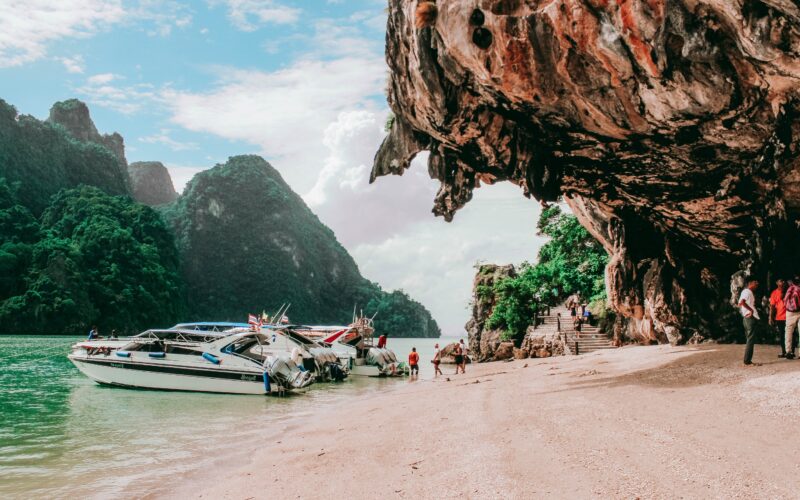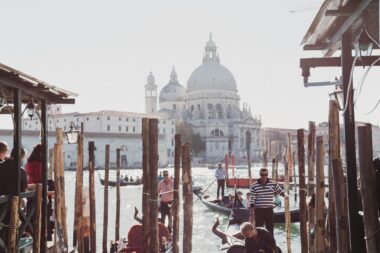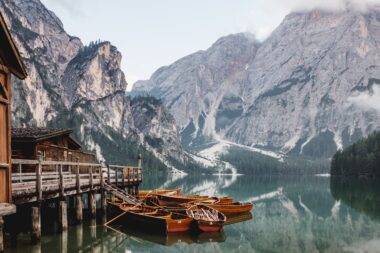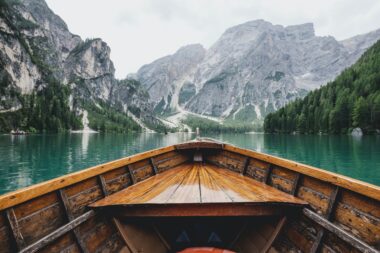Tourist hotspots are hotspots for a reason. Or at least they once were. But with millions of people descending on popular destinations every year, many have turned into mediocre experiences for visitors and nightmare scenarios for locals. In a drive to capitalise on tourism income, some places have become completely overrun, with little to no people management or environmental protection. But is there room for balance? Can we still visit these places and leave them in a better position than when we arrived? We explore if you can sustainably travel to tourist hotspots and share some tips we learn along the way.
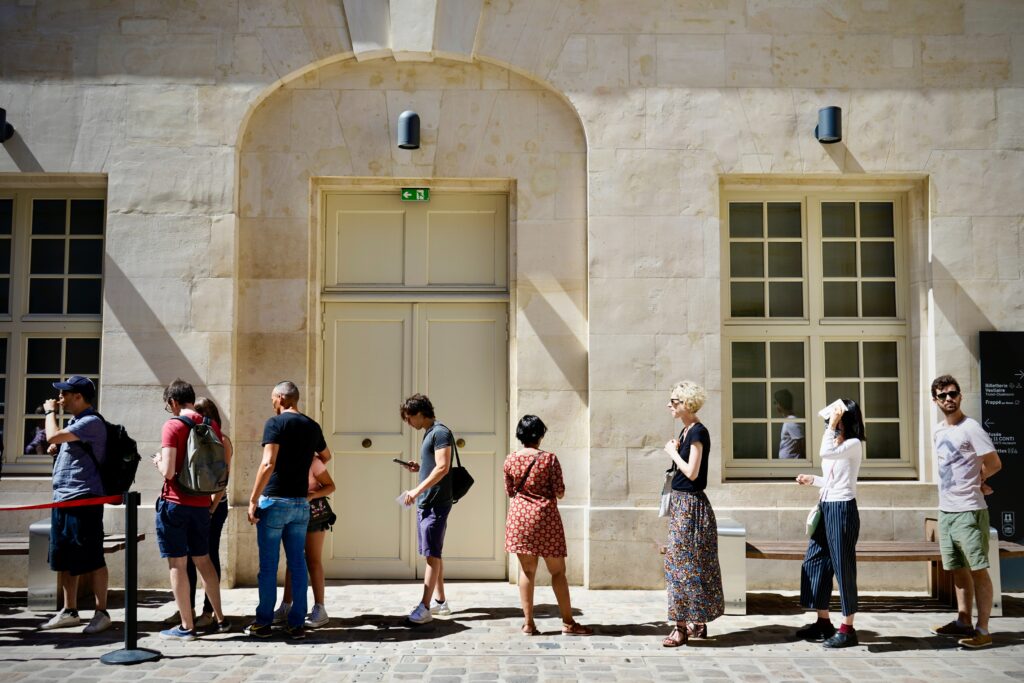
The Impact On Tourist Hotspots
Overcrowding
If you’ve ever visited a tourist hotspot you’ll already be well acquainted with one of the most obvious impacts of overtourism – the crowds. Swarms of people shuffling from one photo-op to another, often ignoring barriers or traffic signals, banding together to create a less than serene experience for everyone around them. Many European cities have had enough and are starting to dissuade visitors from coming rather altogether. Rowdier visitors have even been targeted with “stay away” campaigns. Mallorca, with its population of 1.2 million people, dealt with 2 million tourists per month in 2022. This prompted plans in 2023 to set a limit of 430,000 tourist beds on the island.
Other areas like Portofino in Italy have introduced “no-waiting zones” to help curb the endless throngs of tourists from taking selfies and blocking the only 400 residents from moving anywhere. Numerous cities like Santorini, Greece and Venice, Italy have either banned or limited their cruise ship tourists, fed up with the swarms of people during the peak season. And who can blame them? Being blocked from going about your daily life by thousands of tourists isn’t anyone’s idea of a good time. Most people don’t enjoy it for the two weeks they’re on holidays, imagine dealing with it everyday?
Pollution
Putting pollution caused by traveling to a destination aside, pollution caused at the destination is more than enough to be horrified at. Only 9% of the world’s plastic waste is recycled, with almost 50% ending up in landfills and almost 20% is just burned. Traveling from countries like Canada and dumping items like travel-sized plastic bottles results in 980 tonnes of travel miniatures alone piling up every year. Extra waste that many countries don’t have the resources to manage.
Shortage Of Housing
With a global housing crisis on our hands, the rise of properties designated as short-term rentals has increased by over 8% between 2017 and 2021 in Canada alone. New York recently joined Barcelona and Berlin in setting regulations to limit the number of short-term rentals operating in the city. Obviously the likes of Airbnb and VRBO aren’t the reason we have global housing shortages but as short term rental popularity increases and longer term or purchasable properties on the market decrease, they aren’t helping matters.
Damage To Important Cultural Sites
When millions of people visit somewhere every year, there’s bound to be some wear and tear from foot traffic alone. But we’re not just leaving our footprints behind. Tourists generate twice as much waste as residents with some even vandalising historic monuments. Just this year Italy saw two well publicised incidents of vandalism, two german tourists defaced of the 460-year-old Vasari Corridor in Florence and a British tourist carved his and his girlfriend’s name into Rome’s 2000-year old colosseum.
Damage to important cultural and historical sites has gotten so bad UNESCO even keeps a list of World Heritage Sites in Danger. There’s currently 56 places on the list including the Historic Centre of Vienna in Austria and the Everglades National Park in the United States. If current trends continue, it doesn’t seem long until more important locations will be added to the list.
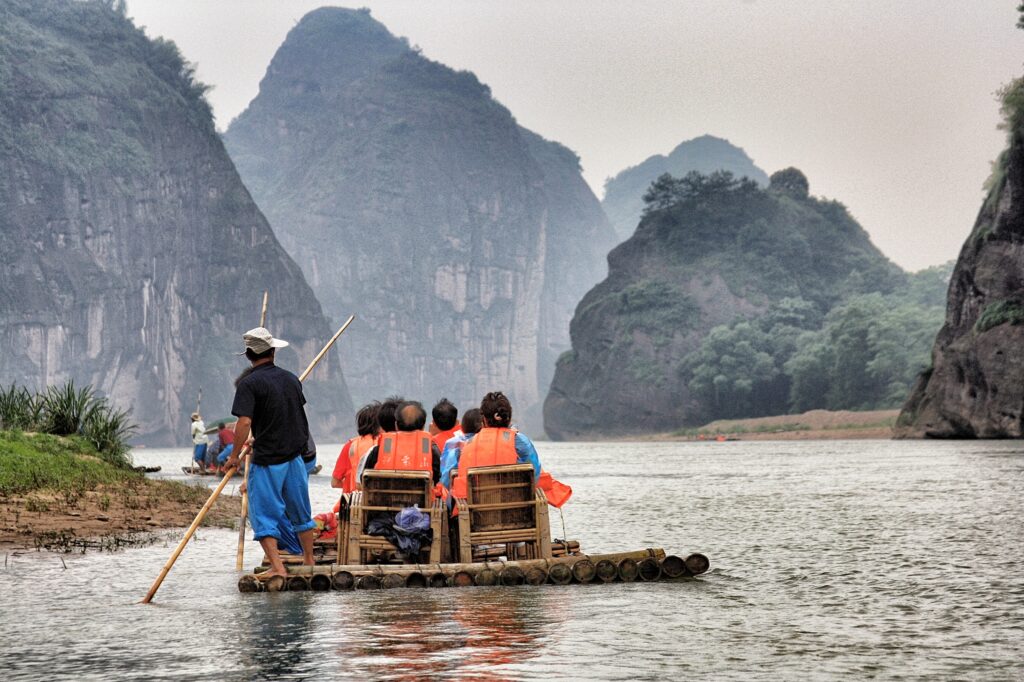
Tourism – It’s Not All Bad
Creates Jobs
Despite being the kiss of death for some places, tourism can be beneficial for some, if managed carefully. Before the pandemic, tourism accounted for 1 in 5 new jobs worldwide with international visitor spending reaching $1.9 trillion in 2019. Places like Macau, Maldives and Aruba heavily depend on tourism, generating more than 30% of their overall GDP. Tourism even accounted for 84% of jobs in Aruba in 2019. Eliminating tourism completely isn’t the answer for these countries, or any others. But managing tourism so everyone can benefit is key moving forward.
Teaches Tolerance
Travelling outside your bubble and experiencing new places has been proven to increase your emotional agility and empathy. Being placed in circumstances often out of your control and dealing with new types of people can help you become more comfortable with discomfort, less judgemental of people and more trusting of strangers. There’s nothing more humbling than being in a country where you don’t speak the language and you need to rely on the kindness of strangers to help you get around. People who’ve had those experiences tend to bring them home and in turn have more empathy for new people to their home country.
Empowers And Supports Small Communities
Tourism can have a big impact on small communities. For every $1 generated directly from Travel and Tourism, more than $2 is generated indirectly. It can also directly support and uplift women, employing twice as many women as other sectors. In areas where employment opportunities are low or inequities are high, community-based tourism can directly contribute to the empowerment of women. In Nepal for example, groups of women have set up women-owned homestays and lodges providing sustainable tourism and job opportunities in an otherwise male dominated country.
Conserves Natural Habitats
As damaging as tourism has been for certain places (Hawaiʻi – my heart goes out to you), it’s also helped bring attention to certain places and help preserve them for future generations. With a global financial investment gap of between $150-440 billion per year, income from tourism helps finance preservation management.
Tourism can also help bring awareness of the importance of certain species and ecosystems to both locals and visitors. In Cambodia, ecotourism helps conserve endangered species like the giant ibis by incentivizing locals not to hunt or cut down trees as visitors flock to see their rare bird population. And in Rewa, Guyana, communities members are employed as sport fishing guides and boat captains rerouting employment from illegal wildlife trade. Wildlife tourism is five times more lucrative than illegal wildlife trade providing sustainable livelihoods and preserving local ecosystems.
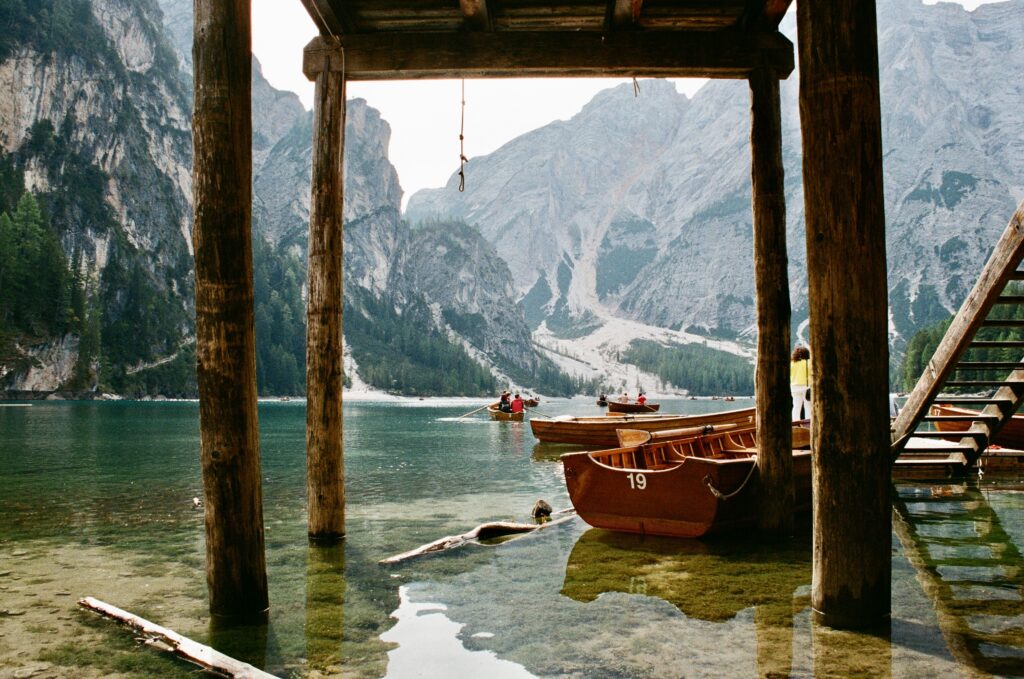
So, Can You Sustainably Travel To Tourist Hotspots
We think so. You don’t need to retire your suitcase and vow to never travel again to be kind to the planet. But you do need to be conscious about how, when and where you travel if you want to do it more sustainably.
How To Sustainably Travel To Tourist Hotspots
1. Visit In The Off-Season
Travelling to tourist hotspots in the off-season helps support communities year round rather than limiting business to just the busy months. In 2021, a third of visitors to Europe travelled in July and August, meaning long lines and delays wherever you go. Travelling during the off-peak season can help avoid crowds, support businesses year round and even help you save a bit of money too.
2. Travel Beyond The Popular Places
Venturing beyond the tourist hotspots and visiting less popular areas is one of the key ways you can help spread tourism revenue across a country. Iceland, known for its rugged terrain and dramatic landscapes, encourages visitors to travel slowly, spend longer in each location and take alternative routes than the Ring Road.
3. Shop Local
Staying at locally-owned accommodation, booking experiences with local companies and eating at local restaurants all directly contributes to the local economy you’re visiting. That’s not to say that the big multinationals don’t still create jobs but they don’t create as sustainable or reliable an environment as locally owned and run businesses do.
4. Travel Slow
Instead of squeezing multiple destinations into a trip, try travelling slow and visiting one place for longer. Travelling slow lets you get to know a place, it’s history and culture in a more immersive way. Take the local bus, walk slowly through the streets and soak up all that a place has to offer rather than speeding through on the hunt for tourist hotspots.
5. Leave No Trace
The old adage of leaving only your footprints behind couldn’t be a more relevant message for today’s travellers. Travelling to new places can be a wonderful experience but only if you respect your new environment and don’t leave it in a worse state than you found it. Use zero-waste products instead of travel miniatures to keep plastics out of landfills. Remember reef-safe sunscreen if you’re going in the ocean. And don’t forget to properly dispose of your garbage and recyclables, including noting plumbing rules so you don’t clog up pipes.
Sustayn is designed to present the most useful recommendations for environmentally friendly approaches and items. We update links when possible, but note that links can be broken and subject to change.
